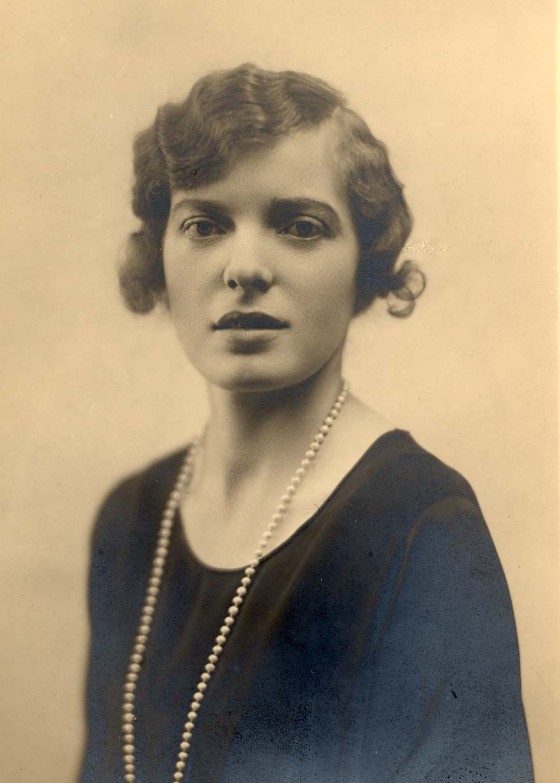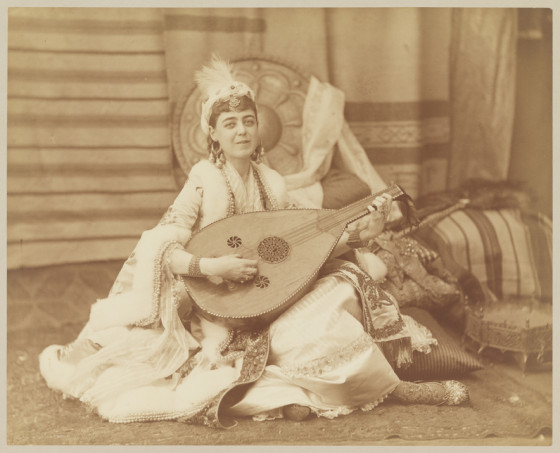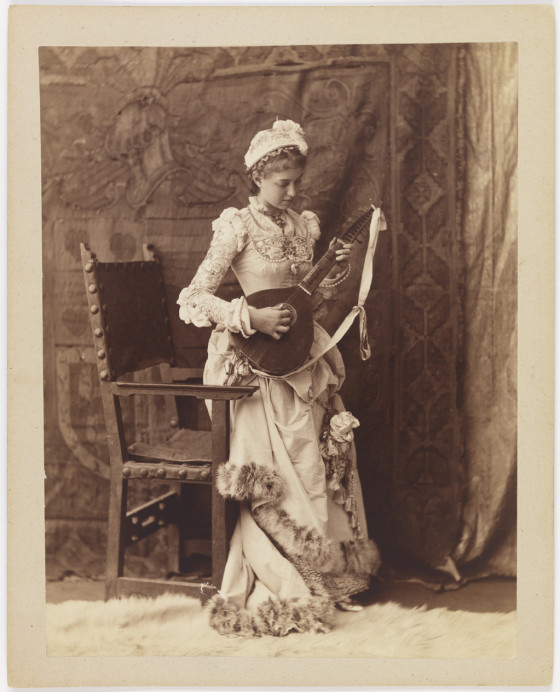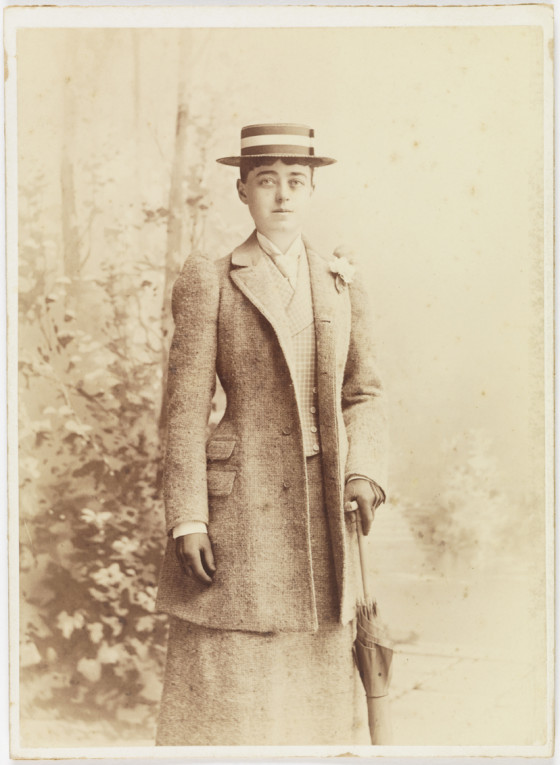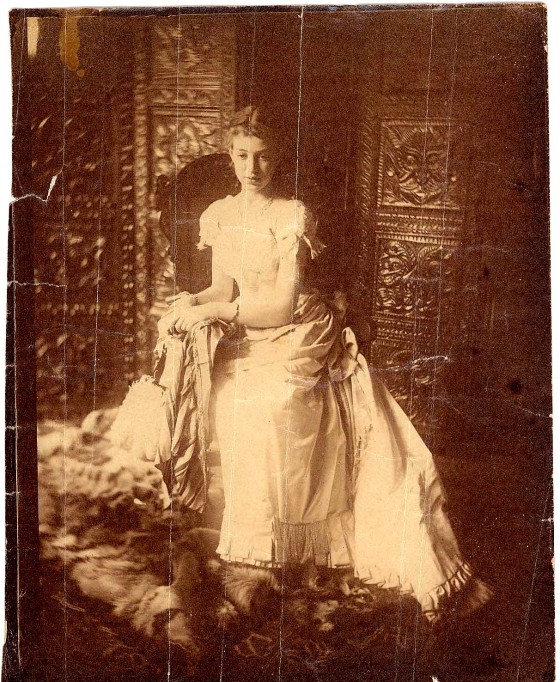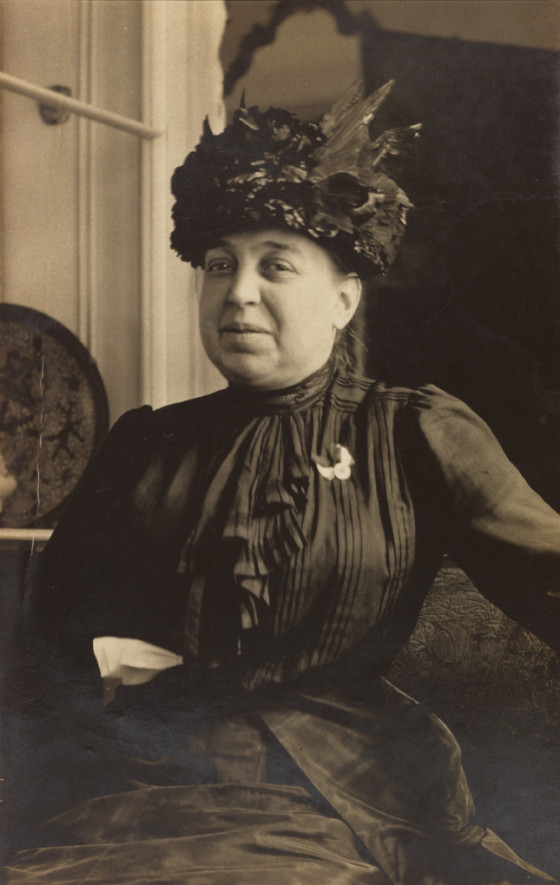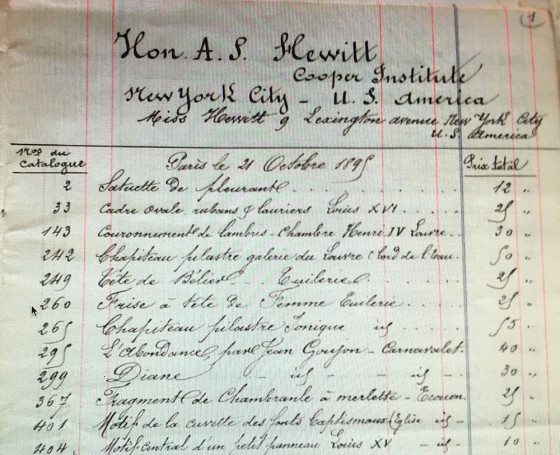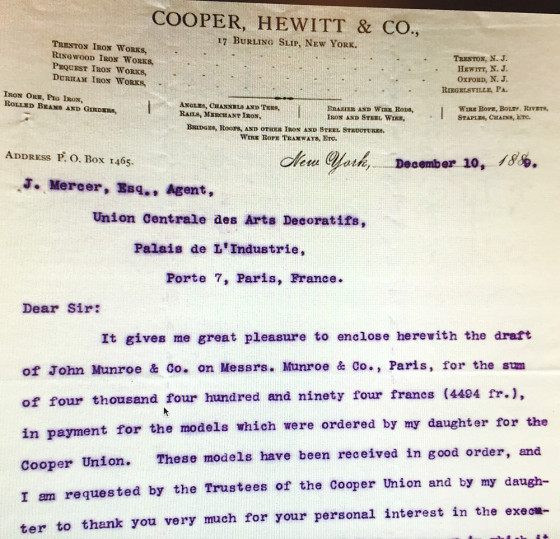In Meet the Hewitts: Part Ten, our history of the Hewitt family and the founding of the Cooper Union Museum concluded with Sarah Hewitt’s death in 1930. Recently, new images and information surfaced — a researcher’s “eureka!” moments — and we want to share these findings with you. The story of Sarah and Eleanor continues!
Margery Masinter, Trustee, Cooper Hewitt, Smithsonian Design Museum
Sue Shutte, Historian at Ringwood Manor
Anna Engesser: “Personal Maidservant” to Eleanor and Sarah
You briefly met Anna Engesser in Meet the Hewitts: Part Nine. She was the niece of “Tante Wally” (Waldburga Schelble), who worked for the Abram Hewitt family for many years.
In 1923, Tante Wally retired and her niece Anna Engesser, age 20, came from Huefingen, Germany, to replace her. Assigned to be “personal maidservant” to Eleanor and Sarah, Anna faithfully worked for the Hewitt sisters (primarily for Sarah, as Eleanor died in November 1924) and was rewarded generously by Sarah in her Will.
After Sarah died, Anna married Geoffrey A. Parmee in February 1932, and continued to work for Erskine Hewitt, Sarah’s brother, until 1935. Anna kept a collection of photographs, letters, and memorabilia to remember her time spent with the Hewitt sisters. Anna and Geoffrey’s son, Edward, inherited the collection and generously shared with us his mother’s stories and archive. We are very grateful to him. The photographs below are courtesy of the Private Collection of Anna Engesser Parmee.
The postcards and letters written to Anna reflect Sarah and Eleanor’s exacting personalities as older ladies. Anna’s duties with regard to housekeeping details are minutely specified. Precise instructions included how to care for Sarah’s Chow Chow dogs Kao and Nanky; how to prepare the beds at Ringwood for the sisters’ arrival home from Europe (keep the heat registers open and lean the mattresses in front of them for a whole week); how to mail clean personal underwear and linens back and forth to the sisters when they were away (“I like to save the new petticoat & use the old one for motoring, which ruins dresses & petticoats with the constant motion of the car”); how Anna should gain weight (eat oatmeal, a lot of butter, and two glasses of milk everyday); the correct way of writing postcards (“You must write all yr postals my way, WHICH IS THE RIGHT WAY . . . “ and “Write yr lines closer together so you can tell me more things.”). This was no doubt annoying to Anna (as she wrote to her family and later told Edward) but Sarah always complimented Anna on work well done.
Musée des arts Décoratifs: “Ewitts” are the Hewitts — Voilà!
Meet the Hewitts: Part Six focused on the Hewitt Sisters in Paris, and we bemoaned the fact that we and the curators at the Musée couldn’t find written evidence testifying to their presence there.
Elizabeth Keslacy, a doctoral student at the University of Michigan’s Taubman College of Architecture and Urban Planning, emailed us last Fall about her plans to write her dissertation on the Cooper Union and the Cooper Hewitt Museums. She wanted to know more about the influence of the Musée des Arts Décoratifs (UCAD) on the Hewitts, and, of course, we shared everything we knew, including our contacts in Paris.
Elizabeth made some wonderful discoveries in Paris November 2014 at the UCAD (Union Central des Arts Décoratifs) Archives. Her research verified that the Hewitt family had a long satisfying relationship with the Directors of the UCAD and that they had advised the sisters on how to establish a museum and library at Cooper Union.
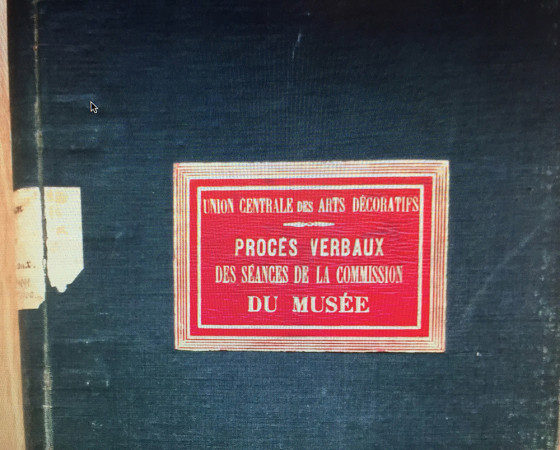
Record Book of Meetings of the Museum Commission, 1895. Union Central des Arts Décoratifs Archive, Paris.
In the UCAD 1895 Record Book of Meetings, the name was spelled “Ewitts”! This misspelling had thwarted our efforts to trace the Hewitts in Paris. Elizabeth found in the November 1895 records a note of gratitude mailed to the sisters — a “Lettre des Misses Ewitt” from the UCAD President George Berger.
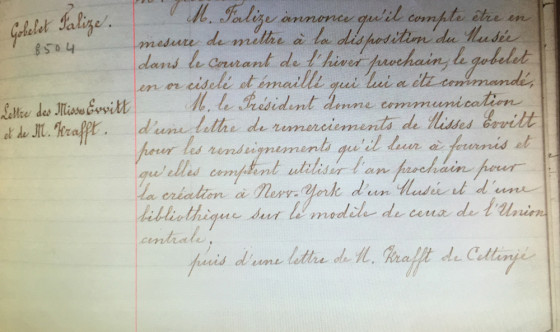
Letter to the Misses “Ewitt,” Museum Commission meeting, November 16, 1895. Union Central des Arts Décoratifs Archive, Paris.
(Trans.: “Mr. President shall communicate a letter of thanks to the Misses Ewitt for the information he provided to them and that they intend to use next year for the creation of a museum and library in New York, based on the model of those at the Union Centrale.”)
Tucked into another UCAD Record Book, Elizabeth discovered a handwritten letter on Hewitt family stationary in which the sisters . . .“beg to tender their sincere thanks to the Directors of the Arts Décoratifs for having kindly allowed them to model the New York Museum after it and also for having given them the necessary information and documents . . .”
Yet another important discovery were the records of the plaster casts that were ordered from the Atélier du Moulages (plaster casts workshop) for the budding Cooper Union Museum. The Atélier was created in 1883 to reproduce models of every period for the purpose of developing professional education. Catalogs of these models were made available for schools, museums, and expositions.
The order submitted by the Hewitts in July 1895 was likely the largest one ever received by the UCAD Atélier, costing over 11,000 francs, and accounted for some 336 objects packed in 19 crates. The Hewitts’ order, which took two months of discussions to finalize, was so large that it necessitated the hiring of two additional workmen in order to complete the work in the promised two months. The reproductions ordered by the Hewitts were exclusively French and largely from the 16th, 17th, and 18th centuries. They ranged from furniture and interior ornament, such as chairs and interior carved panels, to decorative metal objects, such as andirons and locks, to exterior ornament such as balustrades, molding, and freestanding sculpture.
In another folder of UCAD correspondence, Elizabeth found a letter from Abram Hewitt confirming payment for and receipt of a large number of casts. The letter was dated 1889! The Hewitts had begun a relationship with the UCAD years earlier than we had previously thought. Were these casts ordered with an idea of creating a museum within the Cooper Union or for the art schools for men and women at the Cooper Union?
NOTE: The Léon Decloux Collection of architectural decoration installed in the Museum in 1910–12 rendered many of these casts superfluous. For many years, original material was displayed side by side with the plaster reproductions. By 1938, the casts were retired to storage and ultimately given away. The larger casts were given to local educational institutions and the balance found a home in Guayaquil, Equador, where a new museum and school were being constructed.
Sources
Archives de l’UCAD, Bibliothèque des Arts décoratifs, Les Arts Décoratifs, Paris, France. Research, translations, and photographs by Elizabeth Keslacy.
Possémé, Evelyne. “La Politique de Reproduction a L’Union Central des Arts Décoratifs au XIXe Siecle.” In “La Jeunnesse des Musée de France Au XIXe Siecle”: Paris, Musée D’Orsay, 7 Févier–8 Mai 1994, edited by Chantal Georgel, 77–82.

